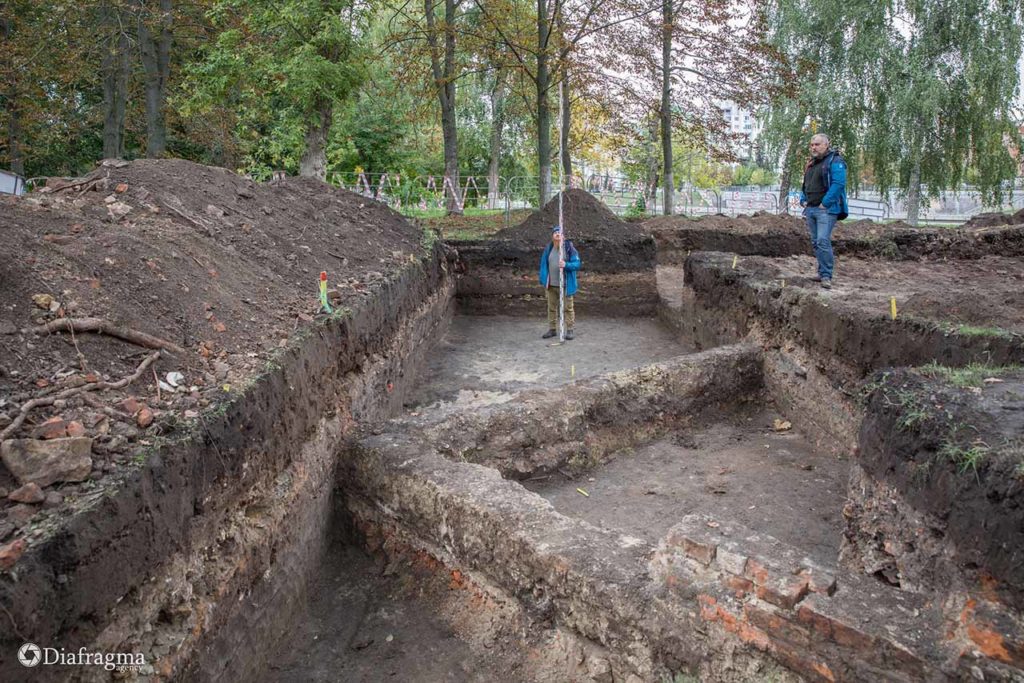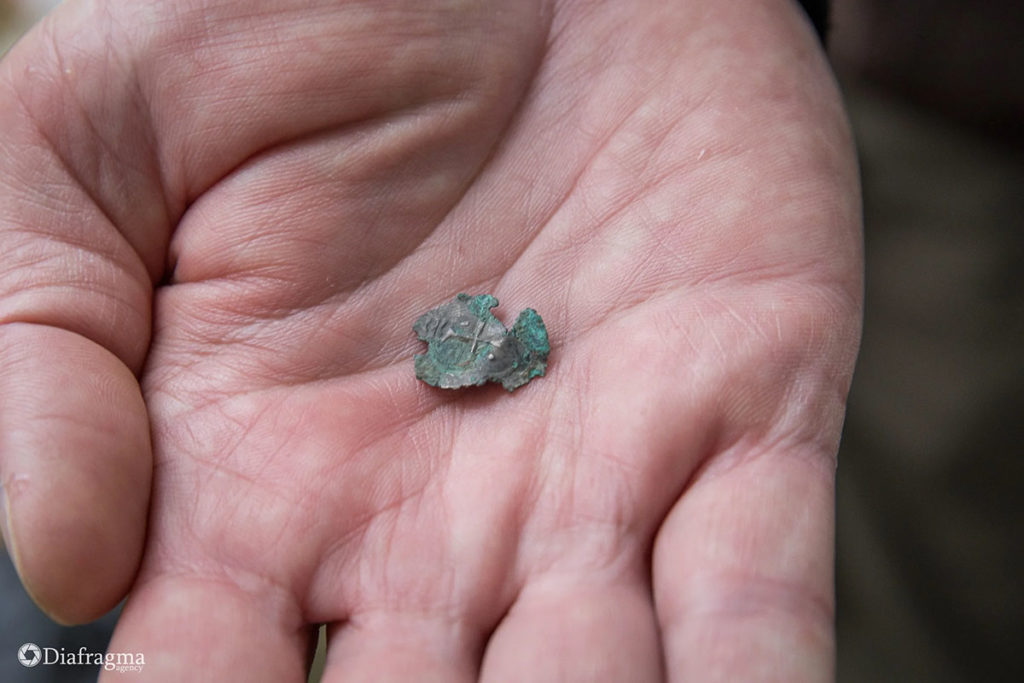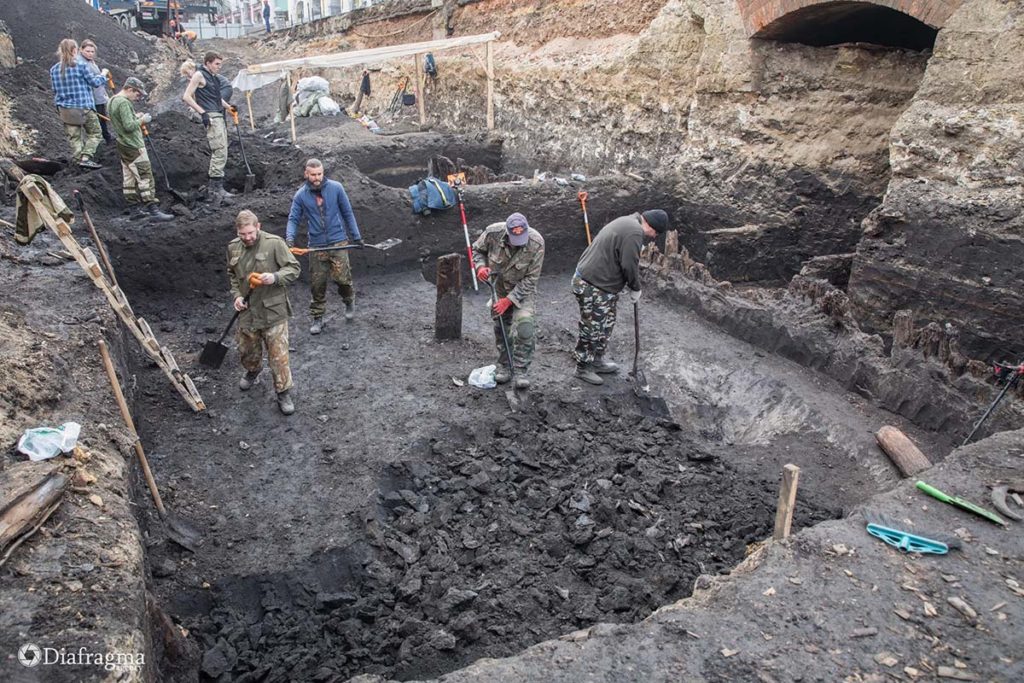Eagle + 500 years!
- 29.10.2021
- Project
the Orel city will celebrate the millennium. Archaeological excavations have clarified the new date of the city’s existence.
In Orel, six years later, excavations were resumed by specialists of IA RAS under the leadership of the head of the Seiminsko-Sudzhinskaya expedition – O.A. Radyush, on the site of the stronghold of the Orel fortress with the support of the Governor of the Orel region A.E. Klychkov and the 1XPEDITION project. Even today, artifacts allow us to confirm one of the hypotheses about the foundation of the city.

While the townspeople celebrated another anniversary – 455 years, researchers are arguing among themselves. There is an opinion that the Orel is older than its years. It appeared long before 1566, when, on the instructions of Ivan the Terrible, a fortress was founded at the confluence of the Oka and Orlik rivers to protect the southern borders of the Moscow state. There is a legend, saying that the king stopped at the confluence of the Oka and Orlik rivers. And it was at that moment a huge eagle landed on the branches of an oak tree growing there. Grozny considered this a good sign and ordered to lay the fortress, and the bird allegedly gave it a name. However, history experts have long suggested that the settlement at this place may have existed in the XI or XII centuries.
In 2015, archaeological work took place on the site of the stronghold of the Orel Fortress, in which a slate spinning wheel was found among many artifacts.

It suggests that settlements at the confluence of the Oka and Orlik existed in the XI-first half of the XIII century. But it is impossible to draw conclusions based on a single finding. Also, during the work, the researchers came across a mass grave – probably the first in Orel. At least, it is the oldest known one. Previously, they did not know about it, although they assumed that the churchyard could exist.

As Oleg Radyush, a researcher at IA RAS, noted: – The remains of more than twenty people, including women and children, were found. The churchyard probably existed from the XVI – early XVIII centuries. It was the nobility who was buried: good teeth, tall stature, jewelry. One of them had an arrowhead stuck in his bones – evidence of events four hundred years ago.
Today’s research continues on the remains of buildings that were discovered in 2015. Archaeologists managed to localize the remains of the Nativity Church in its brick version. In the excavation, you can observe its collapsed walls. The Nativity Church with the chapel of the Assumption of the Virgin was built in 1730 to replace the very first wooden cathedral of the city of Orel. It was one-domed, two-storied with a stone bell tower and porch and was “a church not very extensive and moderately decorated.” The Church of the Nativity existed for a relatively short time. Constant flooding of the arrow led to the fact that the water of the Oka and Orlik washed away the walls, cracks went along the facade, and the bell tower tilted threateningly. In 1786, the Nativity Church was dismantled. As it was found out during the excavations, the temple was built without a strong foundation and of very poor-quality bricks, which affected its fragility.
Around the remains of the structure, history experts discovered a necropolis that existed from the second half of the XVI century. – until the beginning of the XVIII centuries. It was partially destroyed during the construction of the Nativity Church in the 1730s. The cemetery consists of two or even three horizons. The first is graves let into the mainland (that is, into clay), which include several burials, including the largest. They most likely date back to the troubled time, that is, these are the times of Ivan Vasilyevich and Fyodor. The remains found belong to physically developed people with tall stature, which is unusual for peasants. There are skeletons with a height of 183 cm, which for that time it can be considered very tall. There are a lot of injuries on the bones. Moreover, the fractures are fused, which suggests that the victims received many injuries. We can see the very people – the defenders of the fortress, who were buried in the era of Ivan the Terrible. These were representatives of the nobility who participated in all the battles of that period, as well as their families. The burials are localized from about 2 meters below the modern surface, and the bottom was up to 3 meters. In the layer, there were also coins of scales from the times of Ivan the Terrible, Mikhail Fedorovich, Alexei Mikhailovich, arrows, etc.

The foundation of another building was found nearby. Judging by the plan of 1728, the only and earliest image of the Orel fortress, this is a large voivodeship hut. The foundation consists of stone, and the building itself was most likely wooden, – says the head of the expedition. An encryption-quadrivium was found nearby, indicating the noble origin of the owner of the object.

The upper cultural layer in the excavation is represented by coins of Peter I, Anna Ioannovna, Elizabeth, Paul I, etc. Household items – remnants of stoves, stove tiles, all kinds of glass pharmacy and perfume bottles, rings, buttons, and other accidental losses. Since the houses in this place were rebuilt, we can observe the tiles of the beginning of the XVIII and XIX centuries. That is all evidence of the material culture of that time.

The most intriguing finds of this expedition were a coin of the middle of the XI century from Northern Germany. A hanging seal, weight from the scales of about the XI century, and across of the XII-XIV. As was noted by the Doctor of Historical Sciences, corresponding member of the Russian Academy of Sciences, Deputy Director of IA RAS Pyotr Grigoryevich Gaidukov: – the princely seal with the inscription DNE WORD dates from the end of the XI – first half of the XII century. On it is placed the image of St. Nicholas. But it is not yet possible to attribute it to any particular prince.

It is known from history that the place of study in the XI-XII century was part of the Zvenigorod-Karachevsky Principality, which in turn belonged to the principality of Chernihiv. If earlier it was possible to assume that there was a small ancient settlement on the site of the city, now there is reason to conclude that an important trade and administrative center is standing on international routes, which is also confirmed by the coin found, weight from the scales and across.

Researcher at the Department of Archaeology and Antiquities of Stockholm University Kuleshov V.S. determined that the coin belongs to the German Empire, the city of Groningen of the period 1040-1050.

As you know, coins are the main evidence dating the emergence of any city. Thus, the reliable dating of the settlement (settlement) on Strelka refers to the second half of the 11th century. To the end of the Viking Age and the existence of a well-known system of trade routes from the Baltic to the Black and Caspian Seas, one of the points of which was a fortified settlement on the Oka and Orlik arrow on the site of the modern Orel.
This year, during the security work at the Red Bridge, the remains of the building were found with traces of a strong fire throughout the area. Archaeologists have collected an extensive collection of ceramic tableware of the XI – first half of the XIII centuries, iron knives and petiole arrowheads, a buckle frame and a fragment of a non-ferrous metal hatchet pendant, as well as slate weights for a hand spindle (spinning wheel) and fragments of glass bracelets. New data give reason to believe that in the historical part of the Orel. From the site near the modern Red Bridge to the arrow at the confluence of the Orlik River with the Oka, there was a large settlement center that disappeared in the pre-Mongol period.

Archaeological excavations by IA RAS specialists under the leadership of the head of the Seiminsko-Sudzhinskaya expedition – O.A. Radyush, on the site of the stronghold of the Orel Fortress with the support of the Governor of the Orel region A.E. Klychkov and the 1XPEDITION project became the first step towards writing a new history of our hometown of Orel, which has aged 500 years before our eyes.